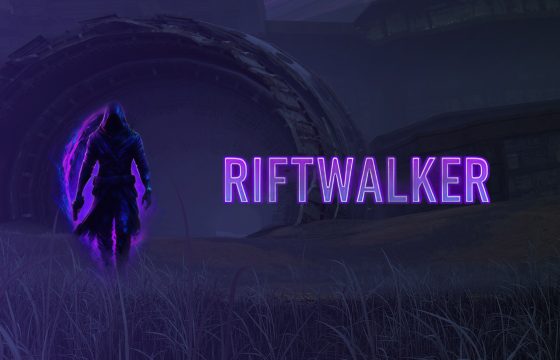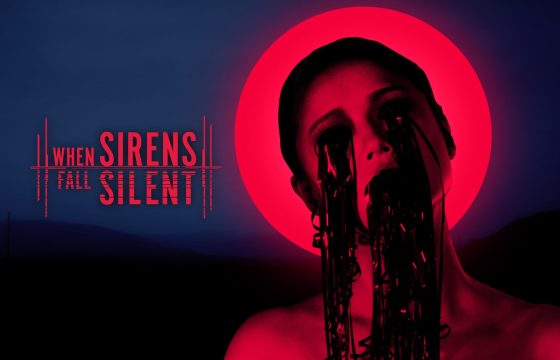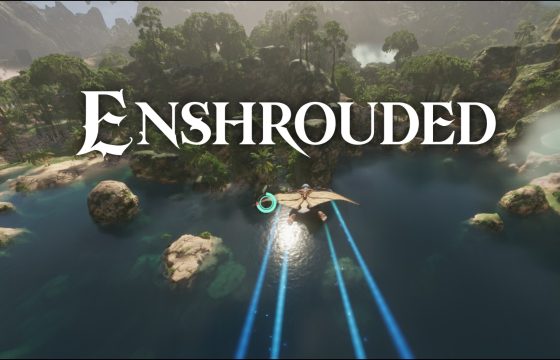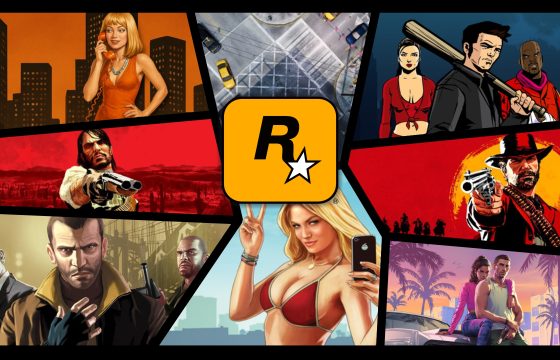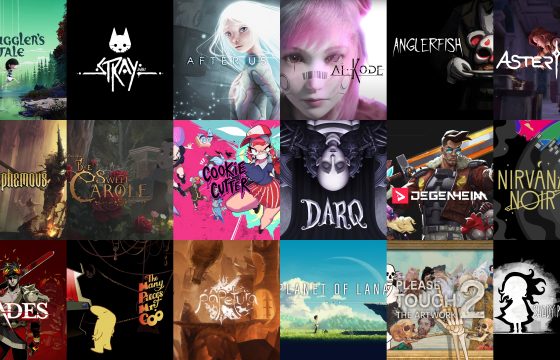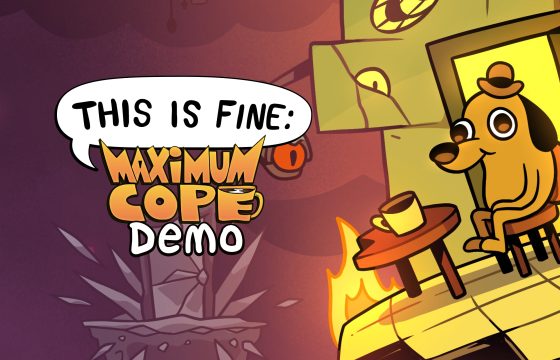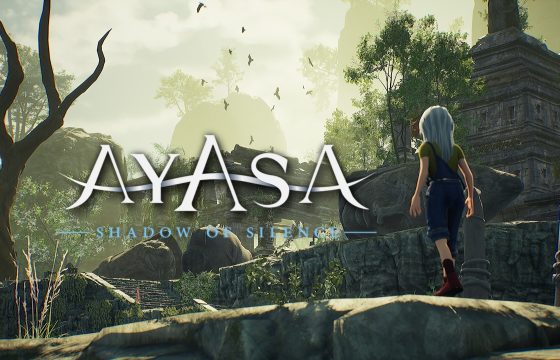What is music? What value does it hold, what role does it play, and what purpose does it serve? We delved into these questions and more with Simon Larguier, the young game designer and President of the Paris-based studio Sunny Peak, who shared an inside look into how their artistic vision takes shape, with music as the vital lifeblood fueling the creative process behind their debut work.

How do we define music? What truly qualifies as music, and what doesn’t? And, perhaps most profoundly, can silence itself be regarded as music?
These are just a few of the questions that have lingered in our minds since the very moment we first encountered Symphonia, the debut project from the Paris-based indie studio Sunny Peak.
For those unfamiliar, allow us to offer a brief introduction. Symphonia is a hand-drawn precision platformer that places music at its very heart—elevating it to the primary medium of expression, the conduit for communication, and the fundamental force that shapes and drives the entire creation. To gain a deeper understanding, we highly recommend consulting our first impressions of the game’s demo, which will offer a clearer insight into the essence of this captivating project.
Let us revisit those three questions we raised earlier. Why did we begin with these specific inquiries, and why, at the very beginning of this piece? Because they lie at the very heart of our conversation with Simon Larguier, the young visionary and president of Sunny Peak, the studio behind Symphonia.
This interview, naturally, does not seek to provide definitive answers to these profound questions—after all, finding certainty in such complex and subjective matters is no simple task. Instead, it offers a window into the perspective of someone who is breathing life into a project where music takes center stage, not as a mere accompaniment, but as the driving force, granted full creative freedom to permeate, shape, and define every aspect of Symphonia.
So, if you’re curious to discover how Sunny Peak has intricately woven music into the fabric of their creation, the value, role, and purpose they’ve ascribed to it, stay with us.
A brief introduction to Simon Larguier
Young and ambitious, Simon Larguier has long nurtured a profound passion for digital arts and the world of video games, alongside his three core hobbies, which he has cultivated since adolescence: speedrunning, mountain hiking, and playing the ukulele.
Simon has always been deeply captivated by the experimental and artistic dimensions of game development—drawn to its innovation, its ability to stir profound emotions, and its natural evolution. Like his colleagues at Sunny Peak, Simon found his true calling, or perhaps more accurately, his defining moment, by immersing himself in one of his greatest passions: the gaming industry. This transformative shift took place at the close of 2016, as he completed his academic journey at ISART Digital in Paris.
Fascinated by the indie game scene from an early age, Simon has always been driven by an unwavering desire to become a game developer. His journey began with contributions to the French localization of various titles on Steam, before transitioning to the hands-on development of numerous personal projects.
After completing his Master’s degree in “Theoretical and Technical Aspects of Game Design” at ISART in June 2020, Simon worked alongside twelve peers on an early prototype of Symphonia. With this invaluable experience under his belt, he realized it was time to think bigger, to turn his long-held vision into reality.
It was from this decision that the initial building blocks of Symphonia were laid, leading to the creation of Sunny Peak, the development team where Simon now serves as president.
Now that we’ve provided some context and insight into our interviewee, we invite you to dive into the interview. Enjoy the read!
The Interview
Hello, Simon! Welcome, and thank you for joining us. Let’s kick things off with a question that might feel a bit personal, but at this stage of your debut project’s development, it’s essential to get a sense of your mindset as you enter this intense, high-energy phase. How are you feeling, what emotions are running through your mind, and more importantly, how is everyone at Sunny Peak feeling now that the final stretch is bringing you closer and closer to the full release?
It’s a mix of emotions, I would say. On one hand, we’re incredibly excited because the release is just around the corner. On the other, there’s also a sense of relief, as it’s been quite a journey since we first began developing Symphonia. There have been ups and downs along the way, but we’re really happy and relieved to finally be able to show the game to the world.
Of course, there’s always a bit of apprehension as well—it’s not terror, but more of a gentle nervousness. Will the game perform well? Will players enjoy it as much as we did creating it? So, it’s always a blend of different emotions. But overall, it feels great to finally have the game in the hands of the players.
Now that we’ve broken the ice, let’s rewind a bit and trace your journey step-by-step from the beginning. Symphonia initially began as a graduation project when you and twelve other talented individuals—Martin Lepretre, Corentin Pauvrasseau, Hicham Benrhannou, Kilian Dufour, Alexandre Mansois, Quentin Vernet, Nicolas Derio, Guillaume Gille, Alexis Grand, Pierre Vrel, Olivier Esman, and Guillaume Roux—first met during your studies at ISART Digital in Paris. Could you tell us more about how you all came together, the original idea behind Symphonia, and how this journey started, eventually, almost unintentionally, leading you to work collectively on your first official game?
As you mentioned, we first crossed paths during our final year at ISART Digital. Initially, Symphonia was simply a student project. When we began collaborating, we had one clear idea: the game would feature a tool that allowed players to attach to walls, catapult themselves, and bounce off the ground. At that stage, we hadn’t yet settled on the game’s musical setting or the idea that the tool would be a bow—a violin bow, to be exact.
We spent a lot of time exploring different ideas to see which ones would be the most engaging and worth pursuing. Ultimately, we chose to set the game in a musical world, with the character being a violinist. When the student version of the game was released, it received positive feedback, which gave us the confidence to believe that Symphonia could be more than just a school project. This opened up the possibility of founding a company and working together on the game with a new vision.
That’s when we decided to restart the project and approach Symphonia with a fresh perspective, with the aim of creating something far more ambitious and refined than its original version.

After eight months of hard work, Symphonia emerged as a success, not only passing your graduation with flying colors but also launching for free on itch.io in July 2020, where it quickly received a warm reception from players. Before we delve into the founding of your studio, Sunny Peak, we’d like to ask: what lessons from that experience do you continue to carry with you today? What advice, insights, and recommendations have you held onto since graduation, helping you grow from students into true creators? Is there a specific piece of advice that has proven particularly essential for you, even today?
We began by focusing on learning the technical aspects of game development. In the beginning, what we retained most were the technical aspects of our respective roles. As a game designer, I honed my skills in game design, while collaborating with developers who each brought their unique expertise—some with a deep understanding of coding, others specializing in artistic direction or composition.
However, we soon realized that creating a game was not just about mastering the craft. We also had to learn how to build and manage a company. It became crucial to ensure that we could run our business in a way that allowed us to live comfortably, free from constant concerns about finances or working conditions.
Along the way, we developed not only technical skills but also stronger communication skills. It became essential to create an environment where we could openly discuss challenges and concerns. By fostering a space where everyone felt comfortable sharing their thoughts, we ensured that internal conflicts didn’t undermine the work or our collaborative experience.
From the very beginning, when you first laid hands on Symphonia and breathed life into it, it was immediately clear that this project could not simply be categorized as a student game; it transcended that realm, possessing the inherent potential to become something far greater. This realization prompted you to establish your own independent team, Sunny Peak, investing every ounce of your being into realizing Symphonia’s full potential. However, how did we arrive at this pivotal moment? What happened between July 2020 and the founding of Sunny Peak that inspired you to take this bold leap, turning your aspiration of becoming key figures in the video game industry into a reality?
Several key factors played a role in our decision to move forward. One of the most significant was the positive reception of our student game. We first released it in the summer of 2020 on itch.io, followed by a second release on GOG in the summer of 2021. Both launches proved successful, with the GOG release especially attracting a large and enthusiastic player base.
At the same time, we began receiving recognition in the form of awards and nominations.Among these, we were honored to win a BAFTA for Best Student Game and the Pégase Award from the French Academy. We were also finalists for the Unity Awards and featured in other notable festivals. This recognition affirmed our belief that we had something special on our hands.
These achievements gave us the confidence to believe that we were capable of turning our vision into a full-fledged commercial project. If we could create one of the best student games of the year, surely we could build a company around it. This realization set the stage for the next step: founding a company, securing funding, and attracting a publisher to help us take the game to new heights.
Let us gracefully delve into the melodic realm of Symphonia, starting with what may initially seem like an obvious question. Yet, we believe it carries profound symbolic weight and serves as a crucial gateway to understanding the creative process behind your debut work. What meanings and hidden messages are embedded in the theme of music? How do you interpret this theme, and, most importantly, what intrinsic value do you ascribe to music, particularly within the world of Symphonia?
Music plays a central role in the development of Symphonia, deeply woven into both the game’s narrative and its world. For us, it’s much more than just an auditory experience—it is a vital force, a source of life. In Symphonia, music is essential for the automatons that inhabit the realm, keeping them active and alive. These mechanical beings depend on the rhythms and melodies that flow through the world to maintain their existence, underscoring music’s role as a life-giving energy.
Beyond its life-sustaining qualities, music also symbolizes pure creativity. Characters in the game wield musical instruments, channeling their creative spirit to compose melodies that breathe life into others. This duality—music as both a source of vitality and a conduit for artistic expression—lies at the heart of the game.
From a development perspective, music serves as an essential storytelling tool. With very little text in the game, we rely heavily on the scenery, art, and music itself to tell the story. Music thus becomes a powerful storytelling tool, carrying emotional weight and enriching the player’s journey. For us, it is undeniably a cornerstone of the game’s identity.
A desolate kingdom, abandoned to its fate, where music—once the sovereign force and the realm’s lone, resounding voice—now struggles against the oppressive and haunting silence that fills Symphonia’s empty streets. This seems to be the kingdom’s sorrowful destiny, at least until the arrival of the protagonist, Philemon. But what was Symphonia like before reaching this point of no return, and what led to this tragic turn? Could you, without giving away too much, share a glimpse into the cryptic and mysterious story that Symphonia has in store for us?
As you mentioned, the game opens with an introductory scene that reveals the mysterious disappearance of the founders, setting the stage for the story that unfolds afterward. However, the fate of the founders is not the central focus of Symphonia. While their disappearance is certainly a pivotal moment, the core of the narrative lies in the present-day world.
The true heart of Symphonia isn’t in uncovering what happened to the founders, but in exploring how the remaining people who still play music in this universe will come together to reignite hope and restore life to the world. The story of the founders may one day be told, but for now, it serves as a backdrop to the more pressing journey of those living in the world today, determined to restore balance and unity to their world.

The demo we played offers a clear vision of how you’ve conceptualized and structured the world of Symphonia, revealing an impressive dedication to world-building. Beyond the monumental and captivating architecture, we were especially struck by the recurring musical motifs woven seamlessly throughout the environments—from the intricate details of individual elements to the grandeur of larger structures. This brings us to ask: will there be other biomes that feature such explicit musical or instrumental references? And if so, was there a specific historical period—perhaps even the Belle Époque—that inspired the design of Symphonia’s world and its beautiful landscapes?
In terms of the game’s musical influences, we drew heavily from composers like Rachmaninoff and Saint-Saëns, among others. This era of classical music is particularly inspiring because composers were beginning to use music to tell immersive stories. Pieces could vary in length—some spanning hours, others only ten minutes—yet in those brief compositions, entire narratives could unfold. Pieces like Danse Macabre by Saint-Saëns tell vivid stories within minutes, and Symphonia seeks to mirror that expressive, narrative quality.
Within the game, musical references are woven throughout the world itself. Certain levels are inspired by the tonal qualities of woodwind instruments, while others reflect distinct families from the symphonic orchestra, giving each area a unique musical character. These elements are harmoniously integrated, using every tool at our disposal to create a rich, resonant world that reflects the depth and character of classical music.

In all our years as gamers, we’ve rarely seen a game that elevates music to such a profound level, establishing it as the foundation upon which everything else is built. In Symphonia, music becomes the sole means to unlock the arcane mechanisms of the towering doors before us; it serves as both expression and language, verbal and non-verbal, woven into every part of this world. Furthermore, it acts as the rhythmic pulse that players must attune to in order to navigate the platforming sections successfully. Looking even deeper, can we expect other unique mechanics centered on music—further expressions in which music emerges as both the central protagonist and the essential key to progression?
Our goal with this game was to immerse players in a world deeply connected to music—without relying on rhythm-based mechanics. Music serves as the thematic backbone, but the gameplay itself is crafted as a platforming experience rather than a rhythm or composition game.
Philemon’s violin and bow are his main tools, allowing players to interact with the world in unique, musically inspired ways, but without requiring rhythmic precision. There are light puzzle elements as well, but these aren’t the core; it’s primarily a platforming adventure rather than a puzzle-platformer.
Staying on the theme of music, what intrigues us most is why you chose to make it the heart of Symphonia, your studio’s first official title. Was your intent to reshape music’s role in gaming, granting it a new identity and dimension—one that transcends the conventional ways it’s typically portrayed and confined? Or was this decision more instinctive, a reflection of your own passion for music?
This project represents our unique vision of uniting classical music, specifically the Romantic symphonic orchestra, with the precision of platformer games. These two elements might seem worlds apart, but we saw a compelling opportunity to blend them into a cohesive experience that feels fresh and engaging.
Our goal isn’t to redefine a genre or invent a new form of music; rather, we’re focused on delivering an enjoyable and unexpected experience——something fun and surprising that players might not have anticipated finding in a game.
One aspect of Symphonia that we would like to explore is its protagonist, the virtuoso violinist Philemon—a striking bird-like creature wielding his violin and bow, with hair that gracefully resembles a musical note. This intriguing design choice certainly hasn’t gone unnoticed. He is a mysterious, hollow being, seemingly devoid of soul, yet animated by the residual energy that sustains the world of Symphonia. Could you share insights into the genesis of his character design, particularly the decision to incorporate bird-like traits and movements? Additionally, what role does Philemon play in the narrative? Why was he chosen as the ultimate beacon of hope to restore Symphonia to its former glory and save it from its grim fate?
As for Philemon’s design, we envisioned him as a character with both agility and grace, essential qualities for the gameplay, which involves bouncing and soaring through various environments. His bird-like form naturally aligns with this requirement, while also reflecting his dual nature as both a human and a violinist. This blend of human and avian qualities embodies the fusion of the two worlds central to the game.
Beyond his physical attributes, Philemon serves as a symbolic figure—a founding member of Symphonia who, along with the other founders, has disappeared. Although no longer part of the present world, he acts as a catalyst for change, helping to unite musicians who can restore balance to the world. While he may seem like the hero of the story, his true role is that of a hero rooted in Symphonia’s origins, helping others discover their own strength and empowering them to take charge in the mission to save their world.

During his journey, Philemon will encounter a diverse array of captivating characters, the final remnants of the legendary Orchestra that once brought life to the streets of Symphonia. We’d like to know: will these characters be exclusively NPCs, or will there also be playable characters that we can control alongside Philemon? Will they share an animal-like appearance, similar to the main protagonist? Most importantly, what role will each character play in Philemon’s progression throughout the adventure?
In the game, players control only Philemon, but they will meet other important characters who are essential to both the story and its progression. As the narrative develops, players will learn to engage with these characters, forming bonds through music and collaboration. However, it is through Philemon that players will experience and explore the world, as he is the primary character they control throughout the journey.
During the demo, we observed a particularly fascinating detail: in addition to guiding us through the game world and assisting us in overcoming platforming sections, we have the chance to play Philemon’s violin in what seems to be a form of “free play” dedicated to the protagonist’s musical instrument. Could you elaborate on the inspiration for incorporating this mechanic? Will it be integrated similarly in the full game, and can we anticipate a diverse selection of melodies as rich as those we experienced in the demo?
In Symphonia, Philemon can play the violin at any point in the game, which serves both as a core gameplay mechanic and a flavorful element. Players can fully embrace the role of a violinist, relishing the music Philemon creates. To deepen this experience, we recorded dozens of violin tracks, many of which are seamlessly woven into the game. From the outset, you’ll have access to a range of tunes, with additional pieces unlocking as you progress. Additionally, players can enhance their performances by collecting special items, which not only unlock new tunes but also elevate the overall musical experience, making each performance even more captivating.


One last intriguing aspect of the gameplay that caught our attention is the shimmering coins, which seem to serve as collectibles, each embellished with the symbol of a musical note. Collecting these coins in sequence contributes to the score displayed at the top of the screen, with a total of four coins required for completion. Could you elaborate on their significance, as much as you’re able to share? Are they intertwined with the progression of the main quest line, or, as we suspect, do they primarily serve as collectibles that do not affect the overall narrative?
The collectibles in Symphonia are entirely optional, and we included them in the demo to showcase that the game isn’t purely linear—there are also elements to collect and explore. In the demo, we only featured one type of collectible: the gold coins you mentioned. However, in the full game, there are several other types of collectibles, each with unique effects and reasons for collecting them.
These additions expand the game’s side content, providing a deeper, more engaging experience. While gold coins yield specific rewards, other collectibles unlock different types of benefits. Collecting them all not only enhances gameplay but also reveals more about the world of Symphonia, helping players understand the mysteries that shape its existence and ultimately completing their journey.
Music has a unique ability to communicate messages, emotions, and entire narratives without relying on words or other forms of expression, essentially acting as its own language. However, we wonder: in the melodic realm of Symphonia, is there a true verbal language through which its inhabitants communicate and express themselves, or is music sufficient to fulfill all these various roles?
In Symphonia, we made the intentional choice to exclude traditional dialogue, opting instead to emphasize the central role of music as a means of communication. While the game world itself focuses solely on music as a form of interaction, I can imagine that, in a real-world version of Symphonia, its inhabitants would also speak with their voices, not just through music. The idea of using both music and speech to convey different messages is intriguing. However, for the purposes of the game, we’ve chosen to keep communication grounded in the expressive power of music alone.
Let’s briefly return to the more conventional dimension of music, focusing on sound design and the original soundtrack. We understand that the OST will be crafted by your team’s own Oliver Esman, drawing inspiration from the Romantic musical period and recorded exclusively for Symphonia by the renowned Scoring Orchestra Paris. Could you elaborate on the motivation behind this artistic choice? What was the experience of collaborating with them like, and what distinctive sounds can we anticipate in the Symphonia soundtrack?
The decision to record the music with a live orchestra was a deliberate artistic choice. When you listen to music, especially orchestral compositions, there’s a distinct difference between the sound of real instruments played by skilled musicians and the synthetic sound of virtual instruments. Since Symphonia revolves around the concept of a symphonic orchestra, this authenticity was crucial to our vision. Without recording with a live orchestra, it would have felt as though we were not fully embracing the core of our game’s identity.
However, this decision came with its own set of challenges. Recording with a full orchestra, with dozens of instruments, involves complex logistics. To overcome this, we partnered with Scoring Productions and their orchestra, the Scoring Orchestra of Paris. They helped bridge the gap between our development team and the musicians, guiding us through the technical and logistical processes.
The result is that when you listen to the music, you feel as if you’re in the same room as the musicians, experiencing the emotions we aimed to convey with each piece. While large-scale games with substantial budgets often record with orchestras, we believed it was essential for Symphonia—even as a smaller team—to capture the essence of orchestral music due to its central thematic role in the game.

As our final question, we’d like to return to the central theme of our discussion: the music and the current state afflicting the realm of Symphonia—silence, the complete absence of music. Do you believe that even in the most deafening silence, there is a form of music to be found? Is silence, in itself, an integral component of sound, a soundless echo that resonates?
That’s quite a philosophical question, and I believe it holds a deep truth. In Symphonia, silence symbolizes death, while music represents life. Yet, when listening to a piece of music, it’s not just the notes that matter but also the silence between them. Without these pauses, music would lose its essence—just as life would lose its meaning without the inevitability of death. These elements, silence and sound, are intrinsically linked.
This concept extends to video games as well. What would Symphonia be without the years of development behind it? Those years spent in quiet creation, with no one able to experience the game until it was complete, are what lend the project its true depth and meaning. Silence, in this sense, makes the music—and the entire experience—more powerful and resonant.

The Enchanting Symphonic Realm of Symphonia is Set to Welcome Its Audience
Before we conclude, we’d like to express our sincere gratitude to you for following us to this point. A special thank you as well to Simon for his availability and kindness in joining us, answering all our questions, and providing insights into their upcoming game.
A quick reminder that Symphonia will officially open its doors on December 5th, available on Nintendo Switch, PC, PlayStation 4, PlayStation 5, Xbox One, and Xbox Series X|S.
For further updates, stay tuned and follow the game’s X account to keep up with the latest news. We’ll also be here, ready to share our review of the game with you.
That’s all for now. Until next time!


